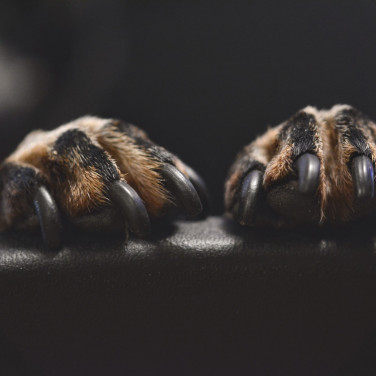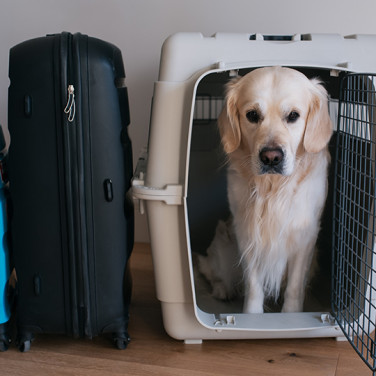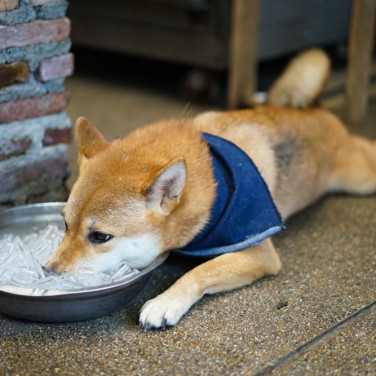ARTICLE
How to Help Dog With Separation Anxiety - 5 Simple and Effective Tips
페이지 정보
본문


What is dog separation anxiety?
Separation anxiety in dogs is a distressing condition characterized by frantic, distressed, and often destructive behaviors when dogs are separated from their pet parents. Understanding and addressing this issue is crucial for fostering a healthy and balanced relationship with our pets. In this article, we will explore five steps you can take to alleviate dog separation anxiety. By implementing these techniques, you can create a more comfortable and secure environment for your beloved pet, helping them cope with and overcome their separation anxiety.
Signs of separation anxiety in dogs

Signs of separation anxiety in dogs can vary from mild to severe and may include:
-
Excessive vocalization
Dogs with separation anxiety may bark, howl, whine, or engage in excessive vocalization when left alone.
-
Dogs may exhibit destructive behaviors such as chewing furniture, doors, or other objects in the home, scratching walls or floors, or digging at carpets.
-
In some cases, dogs with separation anxiety may urinate or defecate inside the house, even if they are otherwise house-trained.
-
Escape attempts
Dogs may try to escape confinement or the house itself in an attempt to find their owner, which can lead to injuries or damage to property.
-
Pacing and restlessness
Restlessness, excessive pacing, and an inability to settle down are common signs of separation anxiety in dogs.
-
Excessive salivation
Dogs may drool excessively when experiencing separation anxiety.
-
Some dogs may lose interest in food or refuse to eat when left alone.
-
Shadowing behavior
Dogs with separation anxiety may constantly follow their owners around the house and become extremely clingy when they sense an impending separation.
It's important to note that these signs can also be indicative of other medical or behavioral issues, so it's crucial to consult with a veterinarian or professional dog trainer for an accurate diagnosis and appropriate management strategies.
Causes of separation anxiety in dogs
The exact causes of separation anxiety in dogs are not fully understood, but there are several factors that can contribute to the development of this condition. From previous traumatic events, changes in routine, lack of socialization, and lack of mental and physical stimulation, to simply a genetic predisposition. Some dog breeds are more prone to anxiety-related issues, including separation anxiety. Breeds such as Labrador Retrievers, German Shepherds, and Border Collies may be more susceptible, although any breed can experience separation anxiety.
How to stop dog separation anxiety
The following 5 strategies we have listed for you are effective simple solutions you can apply one at a time in order to alleviate separation anxiety.
-
Creating a safe and comfortable environment

Designate a safe space for your pet in the house. Create a cozy area for your dog with their favorite items, such as their bed, toys, or blankets. Consider placing a spray or diffuser that emits a synthetic pheromone or scent that promotes relaxation in dogs in this space. If you have not done so yet, crate training can be your best friend in providing a safe space for your pet to feel secure.
-
Gradual desensitization
An effective strategy can be to practice short separation sessions with your pet. Depending on how severe their separation anxiety is, you can start with brief periods of separation, such as leaving your dog in the bedroom and closing the door behind you into another room. Gradually increase the duration of separation until your dog becomes more comfortable with the short sessions. This can help desensitize your dog to being alone and overall reduce their anxiety when you are not home. If the anxiety is severe, it may be necessary to simulate the departure of your car or the sound of your steps leaving the house. Apply the same strategy while you give your pet their favorite toy and go for a walk or drive. Gradually offer a longer-lasting treat and the duration of being away from the house to run some errands until you come back home without your dog becoming anxious.
-
Exercise and mental stimulation

It is an effective ploy to physically stimulate your dog for at least 20 to 30 minutes before you have to leave the house for work or other reasons. A long walk or playing fetch can help drastically reduce separation anxiety as their priorities get aimed at food and sleep.
-
Implement a consistent departure routine
Establish a consistent routine before leaving the house, such as a puzzle toy or a long-lasting treat for them to busy themselves with. Avoid prolonged goodbyes or excessive attention upon returning home. This reduces the contrast between your presence and absence, making departures less stressful for your dog. Lastly, play soothing music or leave a familiar item, such as a piece of your clothing, with your dog to provide comfort and promote relaxation during your absence.
-
Seeking professional assistance
Ultimately, if these solutions do not provide any sense of relief from their anxiety. It may be time to enlist the help of your veterinarian. Consult with your veterinarian to evaluate your dog’s condition and receive guidance on potential medical interventions or recommendations for professional trainers that are experienced with separation anxiety.
Emphasize positive reinforcement techniques, rewarding calm and relaxed behavior. Avoid punishment-based methods, as they can exacerbate anxiety.
Dealing with dog separation anxiety at night

Separation anxiety at night can pose additional challenges for both dogs and their owners. Begin to establish a consistent bedtime routine, such as a specific activity your dog can associate with bedtime and relaxation. This can be a short walk or quiet playtime paired with the dimming of lights and the use of calming scents in the space. Place an item with your scent, such as a recently worn shirt or a blanket, near your dog's sleeping area to provide comfort and reassurance during the night.
Frequently asked questions
How long does it take to see improvements in my dog's separation anxiety?
The timeframe can vary depending on the severity of your dog's separation anxiety and their response to the implemented strategies. Some dogs may show improvement within a few weeks, while others may require more time and consistency. Patience and consistency are key.
Can hiring a dog sitter or using doggie daycare help with my dog’s separation anxiety?
In some cases, having a dog sitter or utilizing doggie daycare services can be beneficial. These options provide companionship and mental stimulation, which can help alleviate separation anxiety. However, it's important to introduce these services gradually and ensure they are a good fit for your dog's needs.
Conclusion: Summary of alleviating dog separation anxiety
Remember, every dog is unique, and it may take time to find the most effective strategies for your pet. Consistency, patience, and seeking professional guidance when necessary can significantly help in managing and reducing their separation anxiety.
Read more on the Buddydoc blog page!

Buddydoc provides a weekly updated blog to keep you informed on the latest and best ways to prepare and take care of your pet all year round. Check out more articles you may be interested in!













